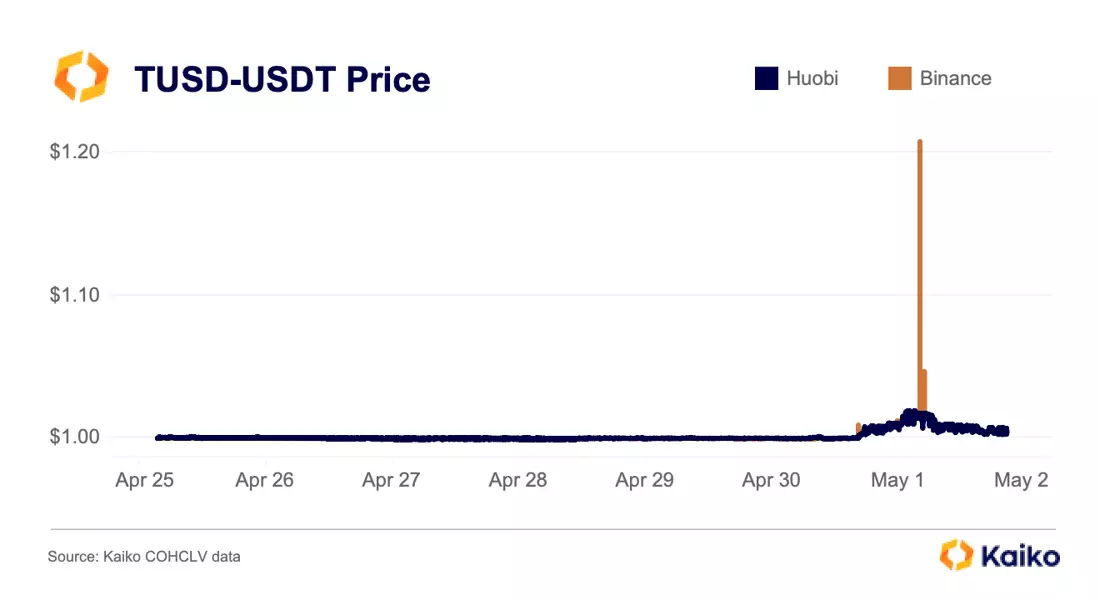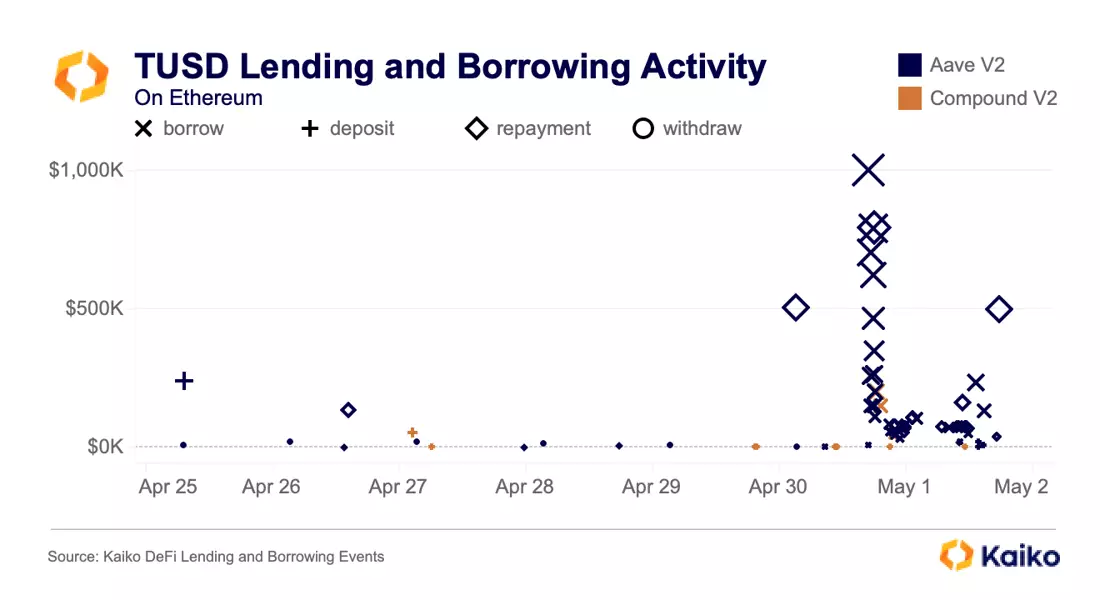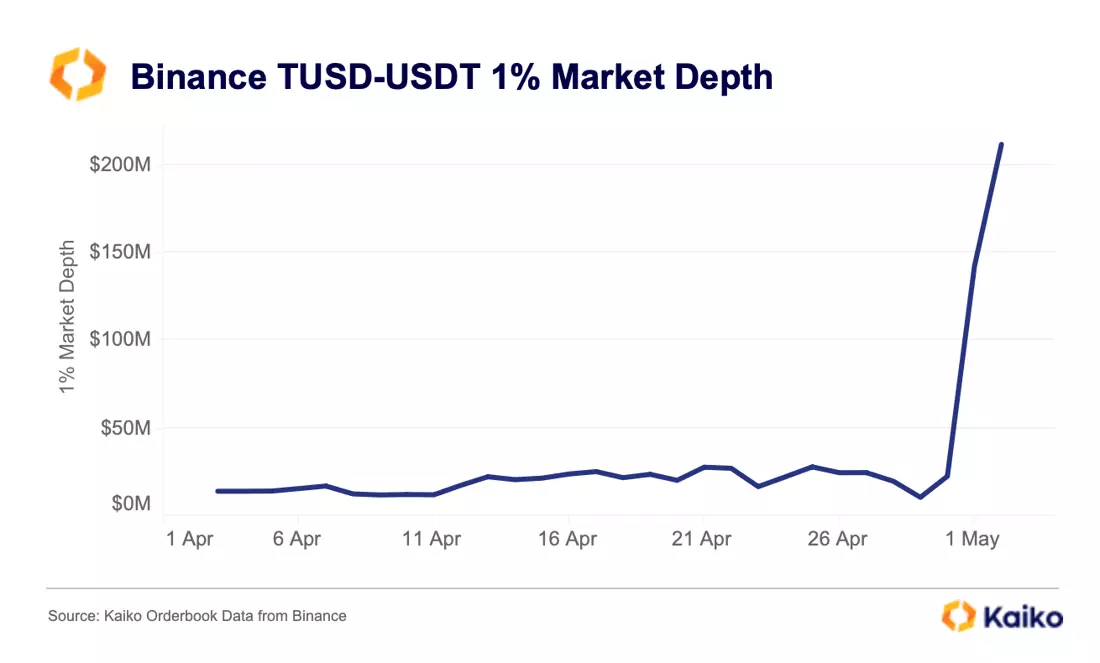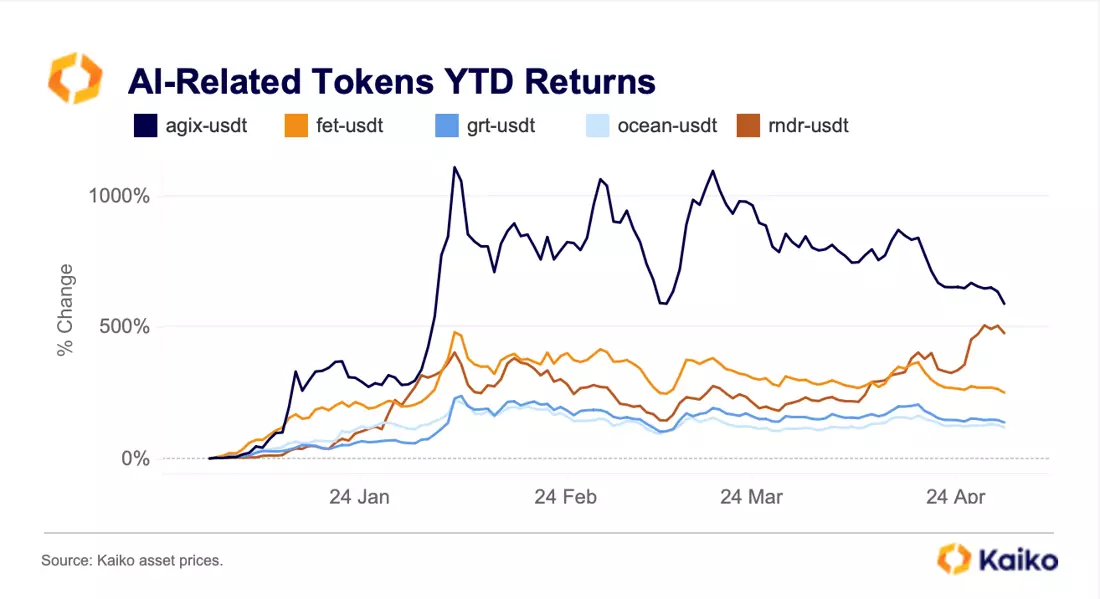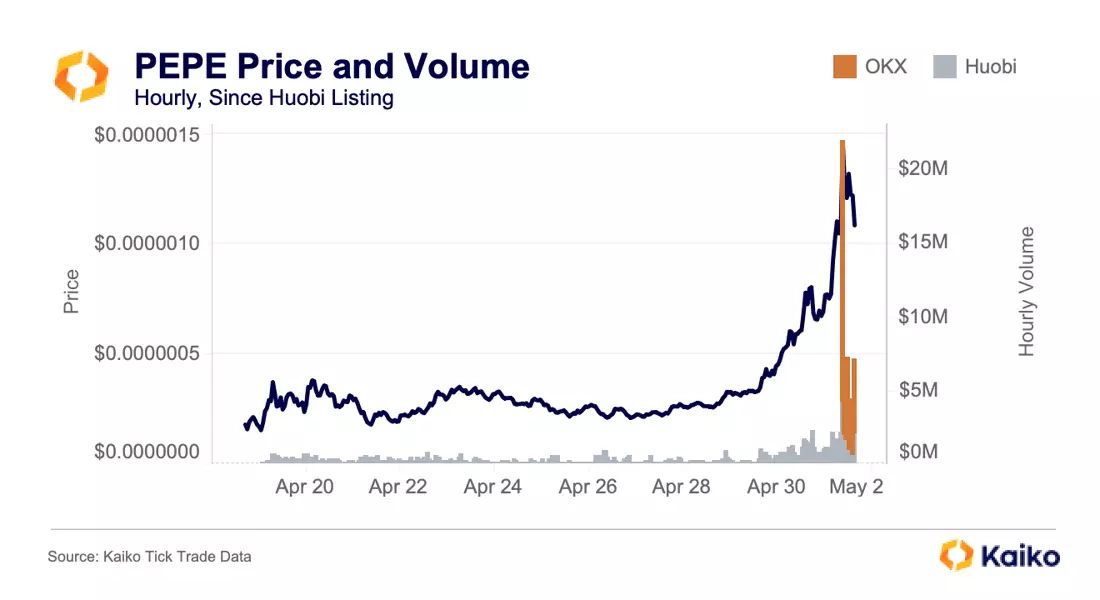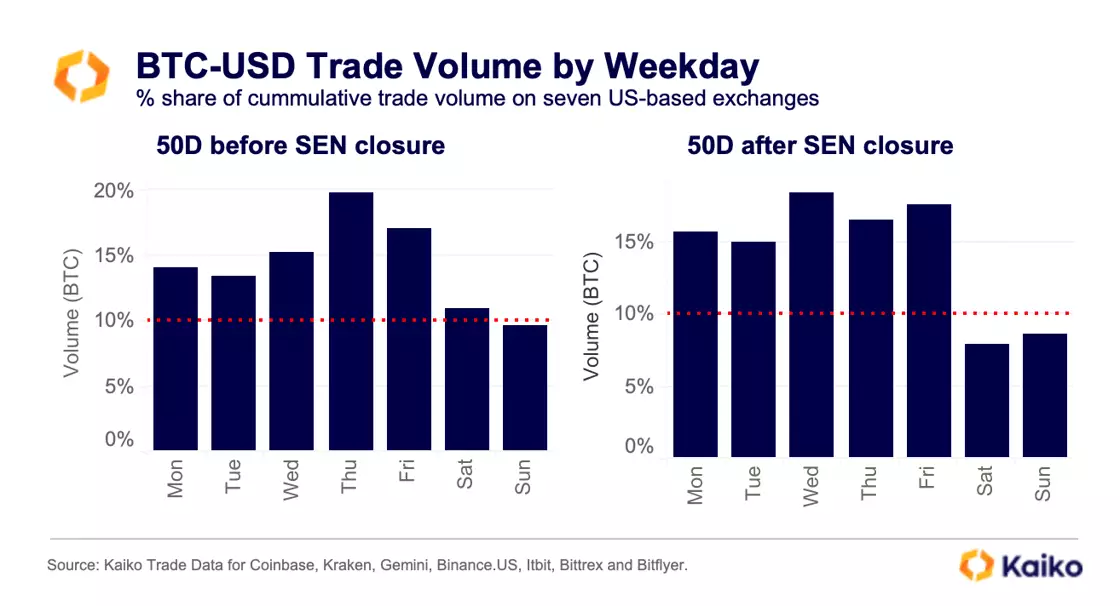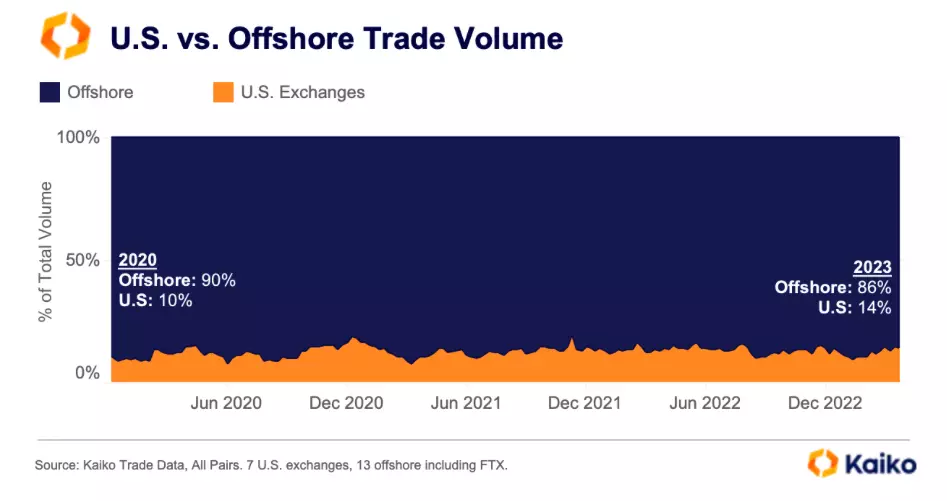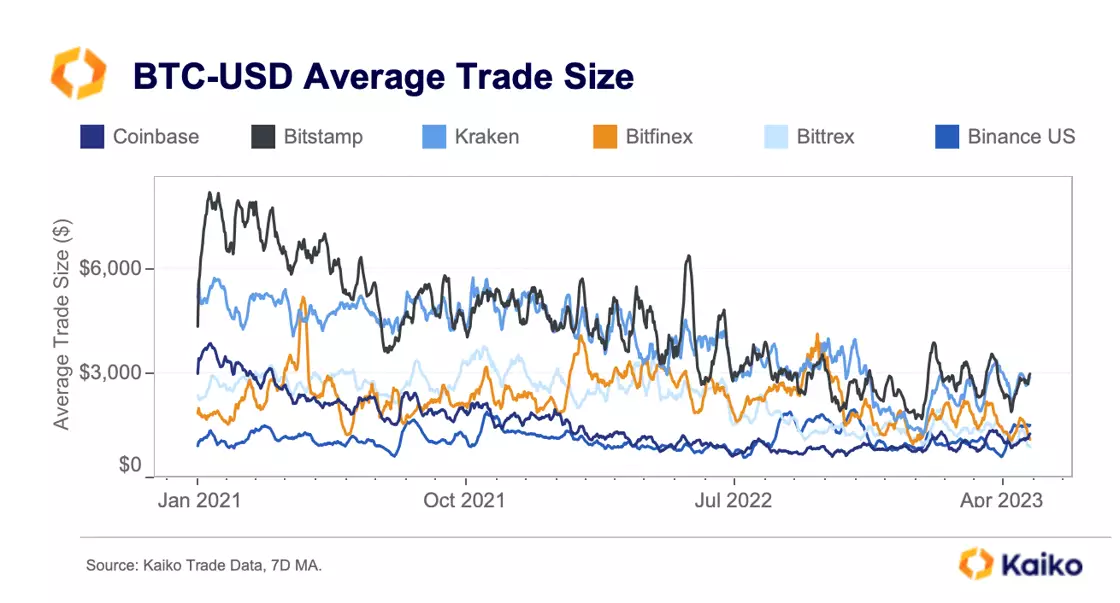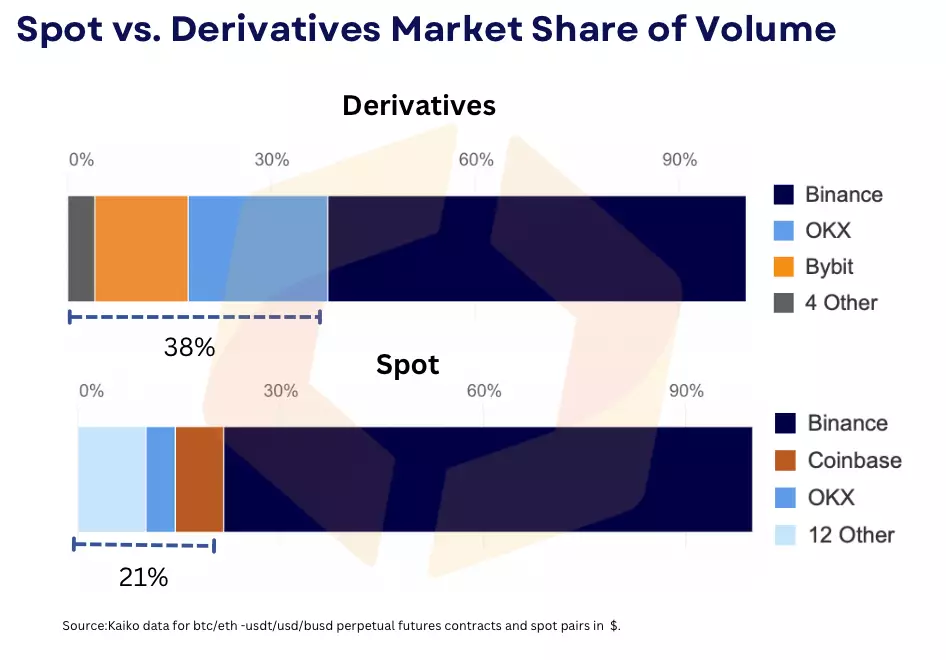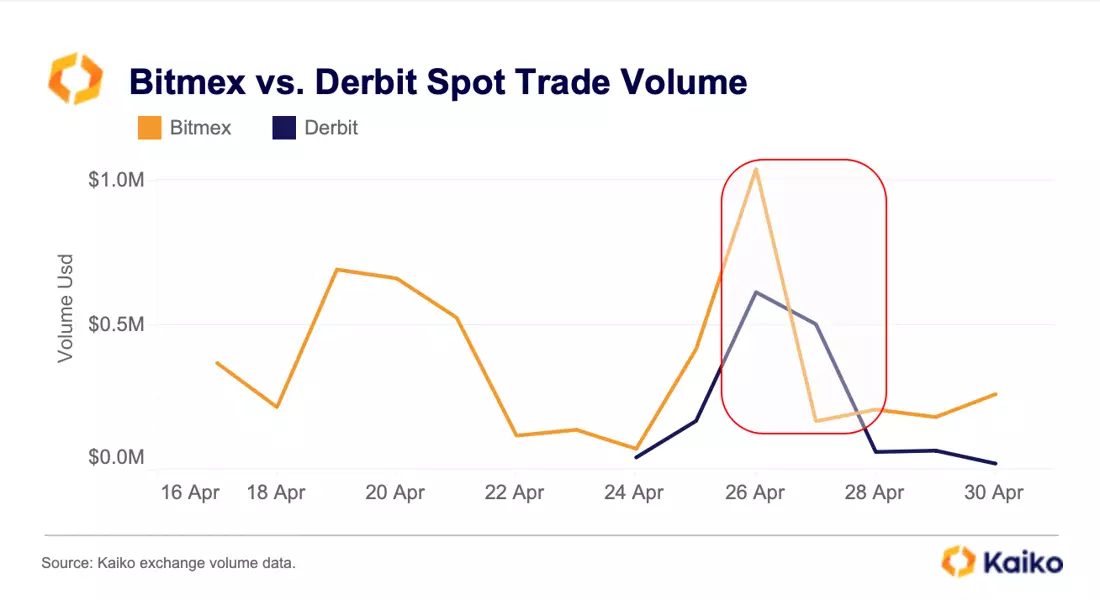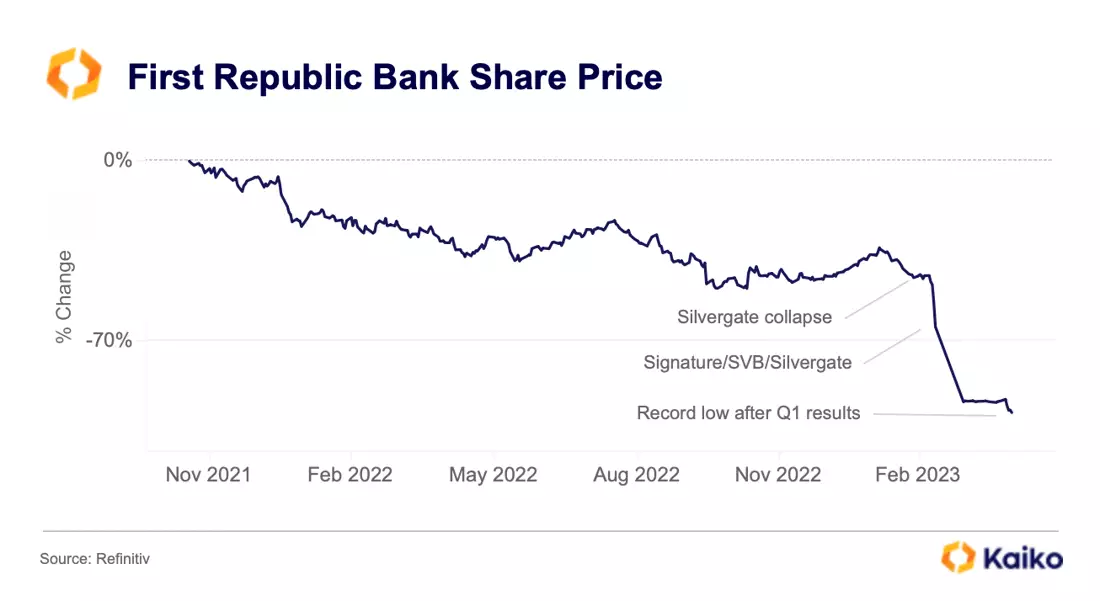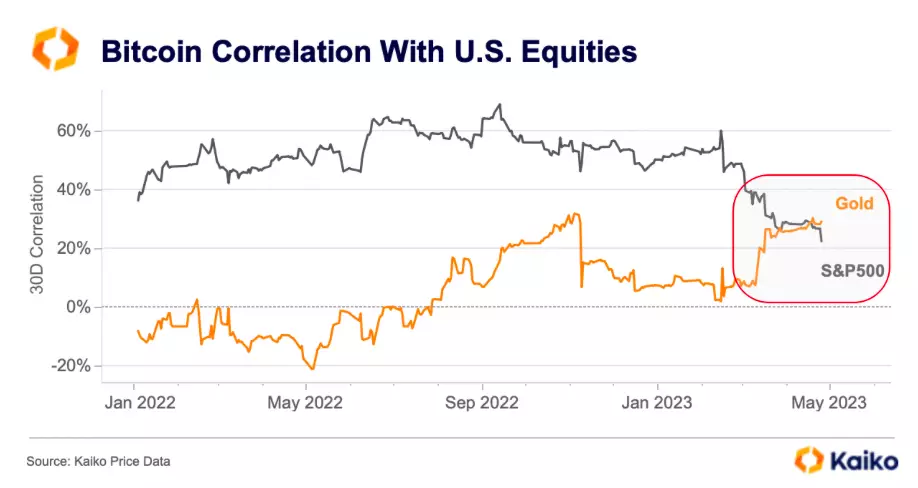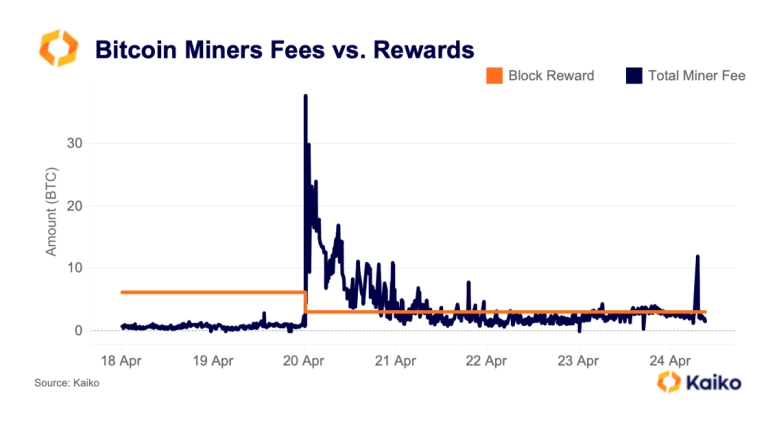Kaiko's Q1 market report is now live!

TUSD Depegs Amidst Heavy Borrowing
02/05/2023

Data Used in this Analysis
More From Kaiko Research
![]()
Bitcoin
25/04/2024 Deep Dive
Bitcoin's Fourth Halving: This Time is Different?This week we’ll provide an update on Bitcoin’s fourth halving, the impact its having on the market so far, and what to will drive demand in the coming months.
Written by Adam Morgan McCarthy![]()
Bitcoin
22/04/2024 Data Debrief
Bitcoin Halving Is HereWelcome to the Data Debrief! The much-anticipated fourth Bitcoin halving went live on April 20. While BTC ended the week flat, transaction fees experienced strong volatility following the launch of Runes, a protocol for issuing fungible tokens on Bitcoin.
Written by The Kaiko Research Team![]()
Asia
15/04/2024 Data Debrief
Crypto Fee War Heats Up in South KoreaWelcome to the Data Debrief! Last week, BTC fell in tandem with risk assets amid escalating geopolitical tensions. However, it regained ground early on Monday after Hong Kong reportedly approved spot BTC and ETH ETFs. In other news, the U.S. SEC issued a Wells notice to Uniswap Labs, and MarginFi experienced over $200 million in outflows as its founder exited.
Written by The Kaiko Research Team![]()
Bitcoin
08/04/2024 Data Debrief
All Eyes on the Bitcoin HalvingWelcome to the Data Debrief! BTC had a shaky start of the new quarter, closing last week flat before surging above $72k early Monday. In other news, DeFi protocol Ethena airdroped its ENA token, Ripple announced a stablecoin, and the Ethereum Foundation proposed to reduce ETH issuance.
Written by The Kaiko Research Team



